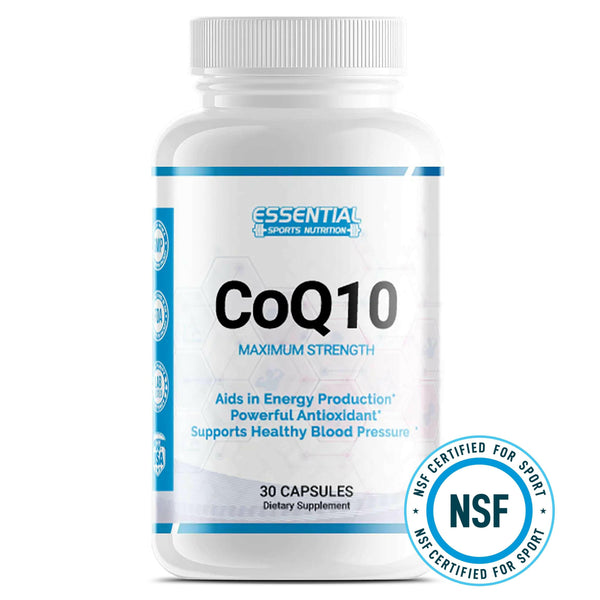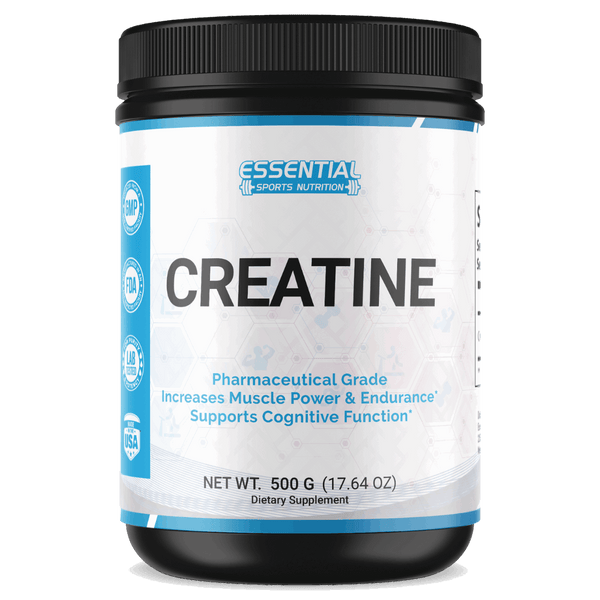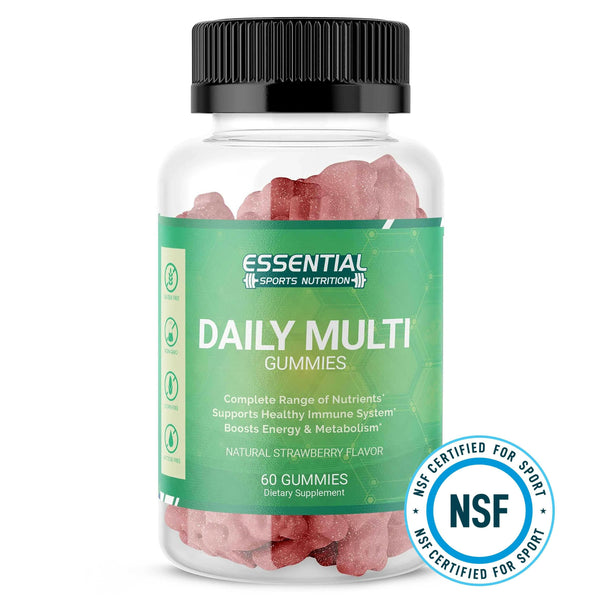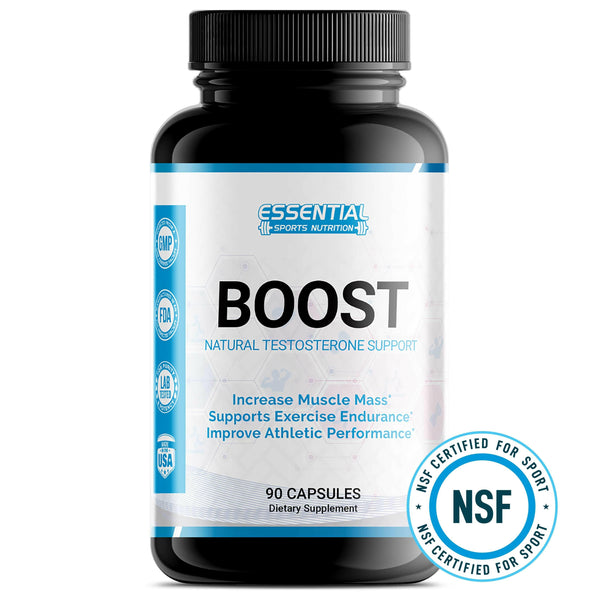The Benefit of Fasted Cardio: Try Your Next Workout On An Empty Stomach
Have you ever thought about working out before breakfast to boost fat loss? Welcome to fasted cardio, a favorite method among fitness fans for burning more fat. This guide will show you how exercising on an empty stomach can improve your fitness routine. By the end, you'll know all about fasted cardio and how to enhance your workouts with it.

Key Takeaways
-
Discover what fasted cardio is and the scientific rationale behind its fat loss benefits.
-
Learn how to seamlessly incorporate empty stomach workouts into your fitness regime.
-
Uncover the potential risks and rewards to determine if fasted cardio aligns with your health objectives.
-
Find practical advice for optimizing your workouts through expert guidance on fasted exercise.
-
Gain insights on personalizing your fasted cardio approach for your unique fitness journey.
Understanding Fasted Cardio and Its Popularity
Starting a fitness journey often leads to trying different workout strategies. One current trend is fasted cardio, which is exercising on an empty stomach. This method has caught the attention of many, from everyday people to fitness pros. But what is fasted cardio, and why is everyone talking about it?
Defining Fasted Cardio
Fasted cardio means doing cardiovascular exercises after fasting, usually overnight. You do these exercises before your first meal of the day. The goal is to burn more fat by making your body use its fat stores for energy instead of carbs from your last meal.
Why Fasted Cardio Has Gained Attention
Fasted cardio is popular because it's believed to boost fat-burning. In a world that looks for efficient health and fitness methods, exercising on an empty stomach is appealing. It fits well with intermittent fasting and is seen as a way to start your metabolism in the morning.
In conclusion, fasted cardio might work differently for everyone. While many support its benefits, it's key to think about your own health and fitness goals. Consider what you want to achieve before adding it to your routine.
The Science Behind Fasted Cardio for Fat Loss
Fasted cardio is more than a trend; it's a way to tap into your body's fat-loss abilities. It shifts how your body uses energy and boosts your metabolism. Let's look into these changes.
When you do fasted cardio, your body uses stored fat for energy instead of food. This is because you haven't eaten recently. This shift helps you lose fat as your body burns through fat stores during your workout.
When glycogen stores are low, the body must call upon lipolysis, the breakdown of fat for energy, which is why fasted cardio is heralded for its fat-burning properties.
Metabolism is also key to fasted cardio's effectiveness. With lower insulin levels after not eating overnight, your body can burn more fat. Insulin helps store fat, so having less of it during exercise helps with fat loss.
What does this mean for your exercise? Here is a table that explains the changes:
| Condition | Energy Source | Impact on Fat Loss |
|---|---|---|
| Fed State | Dietary Carbohydrates | Lower reliance on stored fat |
| Fasted State | Stored Fat (Adipose Tissue) | Higher reliance on stored fat |
While fasted cardio helps burn fat, it's important to match it with your training and nutrition goals. Keep in mind, everyone's body may respond differently to fasted cardio, depending on their metabolism and other factors.
Exercising on an empty stomach can increase fat loss. This happens by changing how your body uses energy and boosts your metabolism. By understanding how our bodies work, you can see if fasted cardio is right for you.
Is Fasted Cardio Right for You?
Fasted cardio has become very popular among those who love fitness. But, before jumping into this trend, think deeply about whether it suits your health and fitness goals. It’s not only about the exercise but also if it matches your life and personal likes. We will help you find out if fasted cardio fits your workout routine well.
Assessing Your Fitness Goals
Thinking about your fitness aims? Fasted cardio might help you lose fat or become more metabolically efficient. But, remember that its effectiveness varies due to factors like body type and lifestyle. Consider what you wish to achieve and talk to a fitness expert to see if fasted exercise fits your goals.
When to Avoid Fasted Cardio
Though fasted cardio works well for some, it's not for everyone. Skip it if you have conditions like hypoglycemia, are expecting, or get dizzy working out early without food. Also, avoid it if you’ve seen a drop in your workout performance or recovery when you miss eating before exercise. It may not suit your personal preferences.
To conclude, deciding if fasted cardio is good for you requires careful thought about your health, fitness aims, and unique needs. Remember, fitness isn't the same for everyone. It's best to customize your plan to get the best results and maintain good health.
How to Safely Implement Fasted Cardio in Your Routine

Integrating fasted cardio into your routine safely is key for health and wellness. Performing it in the morning can be effective if done right. Here are some tips for fasted cardio to enhance your morning workouts.
Exercising on an empty stomach sounds simple, but it has its nuances. To avoid problems or setbacks, pay attention to certain details.
-
Start Gradually: Start with low-intensity exercises and increase them slowly as your body gets used to fasted cardio.
-
Stay Hydrated: Ensure you drink water before and after exercising. Your body loses water overnight.
-
Time Your Workouts: Do your fasted cardio in the early morning after not eating overnight. This uses your body's fasting state.
-
Consider Your Health Status: If you have medical issues or low blood sugar, talk to a doctor before starting fasted cardio.
-
Listen to Your Body: If you feel dizzy or tired, adjust your exercise routine to fit your needs.
With these tips for fasted cardio, you can enjoy the fat-burning perks of morning workouts safely. A slow, steady start allows your body to adapt to the new routine.
Remember, fitness is personal. What works for one might not for another. Enjoy the journey and watch your body positively react to fasted cardio.
Fasted Cardio vs Fed Cardio: Comparing the Two
Choosing the best time for your workout involves comparing fasted cardio vs fed cardio. This choice greatly impacts how your body gets its energy. It also influences the benefits of each method. Understanding which method fits your fitness goals and lifestyle better is key. Let's dive deeper into these workout types to help you make a wise choice.
Let's look at their main differences:
| Aspect | Fasted Cardio | Fed Cardio |
|---|---|---|
| Energy Source | Primarily body fats. | Dependent on recent food intake. |
| Best For | Those who want to manage weight and prefer morning workouts. | Endurance athletes and those needing a performance boost from glycogen. |
| Benefits | Possibly leads to more fat usage for energy. | Could increase energy levels and performance. |
| Consideration | Needs careful planning to avoid muscle loss. | Right timing and food choices are critical to prevent digestive problems. |
| Adaptability | Good for flexible morning schedules. | Best for those needing a pre-workout meal for optimal performance. |
Understanding fasted cardio vs fed cardio goes beyond meal timing. It's about your preferences, goals, and body response. Fasted cardio could enhance fat loss, but might lower energy levels due to lack of glycogen. On the other hand, eating before working out can boost performance, though it might not maximize fat loss like fasted cardio can.
Choosing between fasted and fed cardio depends on you. It should match how your body reacts and your fitness goals.
Try both and see how your body responds. Finding the right workout approach can be personal. It might take time to adjust. Whether you go for the fat-burning benefits of fasted cardio or the energy from fed cardio, it's about your health journey.
A Closer Look at the Benefits of Fasted Cardio

Learning about the benefits of fasted cardio might push you to wake up early. It not only helps with fat loss but also boosts how your body looks and performs. Let's dive into how this method could make your fitness better.
Effects on Body Composition
Fasted cardio is popular for improving body composition. Working out before breakfast makes your body use fat for energy. This helps you get leaner and increase muscle compared to fat. It shapes and defines your body more than just losing weight does.
Impact on Aerobic Capacity
Doing fasted cardio can also enhance your aerobic capacity. Exercising without eating first teaches your body to use oxygen better. Over time, this boosts your stamina. It's great for athletes like runners and cyclists who want to perform better.
| Fasted Cardio Benefit | Impact |
|---|---|
| Body Fat Reduction | Facilitates higher fat burn due to low insulin levels and carbohydrate stores |
| Muscle Preservation | Contributes to a more muscular appearance by potentially tapping into fat for fuel instead of muscle |
| Aerobic Performance | Enhances the body's ability to manage and utilize oxygen, improving overall aerobic capacity |
The science around these advantages is still growing. Yet, fasted cardio shows promise for improving fitness. Adding it to your routine could give you a toned body and better endurance. Why not try it out?
Best Practices for a Fasted Cardio Routine
Starting a fasted cardio routine is more than just exercising on an empty stomach. It's a careful plan for maximum benefits. We will share top tips for fasted cardio, like choosing the best cardio activities. We'll also cover when to exercise and how to eat afterward.
Choosing the Right Type of Cardio
What cardio you pick greatly affects your fasted workout's success. High-intensity interval training (HIIT) boosts fat burning, but gentler activities work too. Choose cardio that matches your likes, goals, and what you can do before breakfast.
Timing Your Sessions Correctly
When you exercise is key. Morning workouts are best. They use your body's night-time fasting. Try to work out early, in the next couple of hours after getting up. This uses low insulin and high fat burning to your benefit.
Fueling After Fasted Cardio Workouts
What you eat after exercising matters as much as the workout itself. Your body needs the right nutrients to recover and refill muscles. Focus on proteins to fix muscles and complex carbs to refill energy. The right post-workout fueling speeds up recovery and boosts your results.
Understanding the Role of Insulin in Fasted Cardio

Starting a workout with low glycogen stores, as in fasted cardio, prepares your body to possibly burn more fat. Insulin is crucial in this process. Knowing how insulin works during fasted cardio and its effect on fat can enhance your workout benefits.
When you eat, insulin levels go up. This hormone helps move glucose from blood into cells. But, with an empty stomach, insulin levels drop. This lower insulin helps the body burn stored fat for energy, instead of sugar from food.
So, what goes on with fat metabolism during fasted workouts? Without high insulin, your body breaks down fat for fuel more easily. This might lead to more fat burning. However, results vary from person to person, and insulin is just part of a complex hormone mix.
When diving into insulin's role in fasted cardio, think about how long or hard you exercise. Long or intense workouts could make your body use muscle for energy, which is bad if you're trying to keep or gain muscle. Balancing exercise with how insulin and other hormones like cortisol play a part is crucial.
The effects of fasted cardio on insulin, fat metabolism, and losing weight are still debated. It's about finding what works for you, your health, and how your body responds to exercise and fasting.
Embracing fasted cardio means understanding your own body's responses to exercise on an empty stomach, including the role of insulin in leveraging fat metabolism efficiently.
What Research Says About Fasted Cardio and Stored Fat

If you're into fitness, you might have heard of "fasted cardio." It's about working out before eating to burn more fat. But, what do studies on fasted cardio really say?
Many scientific studies have looked into how fasted exercise affects fat burning. One study in the "Journal of Physiology" found that exercising before breakfast could help burn double the fat. Another study, in the "American Journal of Physiology-Endocrinology and Metabolism," showed that aerobic exercise after not eating overnight increases fat burn.
These studies hint that fasted cardio could help with fat loss. However, not all research agrees. Some studies suggest that whether you eat before exercising might not matter for fat loss. Instead, things like how much you eat, exercise intensity, and how long you work out could be more important.
For those aiming to lose fat, knowing the benefits and limits of fasted cardio is important. But remember, people react differently to exercising on an empty stomach. What helps one person might not work for someone else.
Exploring fasted cardio is just one part of a fitness journey. Add a balanced diet, regular lifting, and staying active for a complete approach to fat loss and fitness.
In conclusion, fasted cardio has some study-backed benefits for fat loss. Yet, individual health and lifestyle should guide your workout choices. It's an interesting idea with some support from scientific studies.
Always talk to a healthcare expert before changing your exercise routine, especially with health issues or concerns.
Personalizing Your Fasted Cardio Workout

Starting a fasted cardio plan isn't the same for everyone. To gain the most from your sessions, you should create personalized fasted cardio routines. It's important to match your workouts with how your body reacts, your fitness levels, and your goals. Customization is key to making a program that works well and is fun for you.
Think about changing your workout to avoid boredom and injuries. If you want to improve endurance, start with brisk walks then slowly add jogging. For HIIT, begin with short active periods and rest times, increasing as you get stronger.
Start with easier exercises like biking or swimming. Then, slowly up the time and challenge as you feel able. Add strength workouts to make sure your whole body is getting stronger. Listen to your body and change your routine if you feel tired or dizzy.
When planning routines, think about the best time for you to exercise. Are you more active in the morning or later in the day? Working out when you feel best can improve your performance and results.
Remember, personalization means slowly adapting over time, not making big changes all at once. It's easier to stick with a plan that grows with you as your fitness improves and your goals change.
After working out, watch how you feel. Eating right and drinking water are important for your custom plan. A good meal after exercising can refill your energy and help with recovery. This makes your personalized fasted cardio routine effective, safe, and good for your health.
The Risks of Fasted Cardio: When to Exercise Caution

Doing fasted cardio can be good for you. However, knowing the risks and how to avoid them is key. This keeps you safe as you aim to lose fat.
Potential side effects include muscle loss. This happens as your body may use muscle for energy when carbs are low. Also, not drinking enough water could make you dizzy during exercise.
Remember, while the goal may be to burn fat, ensuring your body is adequately prepared and protected is equally important.
Below is a table that helps weigh risks and how to avoid them:
| Risk | Precaution | Potential Side Effects |
|---|---|---|
| Muscle Catabolism | Consume BCAAs or a small protein snack beforehand | Loss of Muscle Mass |
| Dehydration | Stay hydrated before, during, and after workouts | Lightheadedness, Fatigue |
| Low Energy Levels | Plan a light snack if experiencing extreme fatigue | Reduced Workout Intensity |
| Hypoglycemia | Monitor blood sugar levels, especially if diabetic | Dizziness, Shakiness |
Listen to your body when doing fasted cardio. If it doesn't feel right, or if you see bad side effects, talk to a doctor. Don't ignore what your body is telling you.
-
Start slowly and increase the duration and intensity gradually.
-
Choose low to moderate-intensity workouts to begin with, reducing the strain on your body.
-
Always break your fast with a nutritious meal to replenish your energy stores and support muscle recovery.
By taking these precautions, you can manage the risks of fasted cardio. This makes your workouts safe and useful.
Conclusion

Your adventure into fasted cardio could be a game-changer in your fitness plan. We've dived into the science behind working out before eating. It's especially good for those wanting more fat loss and better energy use. This overview gives you the info to choose what fits your fitness aims.
Remember, fitness is a personal path, and fasted cardio doesn't fit everyone. It's vital to consider the pros and cons and watch how your body reacts. Make sure these ideas fit your needs and seek advice from health and fitness experts if needed.
Your key takeaway should be a balanced perspective. Think about the timing of workouts, how your body uses energy, and how to adjust fasted cardio. Let this conclusion guide you. It's a collection of useful tips to help you commit to a smarter, healthier exercise routine.
Fasted Cardio Sessions FAQs
Q: What is fasted cardio?
A: Fasted cardio refers to doing aerobic exercise in a fasted state, typically in the morning before eating anything.
Q: What are the potential benefits of fasted cardio?
A: Fasted cardio could help your body use stored fat for fuel, leading to increased fat oxidation and potentially aiding in fat loss.
Q: Are there any risks associated with fasted cardio?
A: Although fasted cardio can help burn more fat, there is a risk of low blood sugar levels during the workout which can lead to dizziness or fatigue.
Q: Should I eat after a fasted cardio session?
A: It is recommended to have a balanced meal or snack containing carbohydrates and protein within a couple of hours after fasted cardio to help in recovery and muscle repair.
Q: What are the body composition changes associated with fasted cardio?
A: Fasted cardio may lead to improvements in body composition by helping reduce body fat percentage over time, especially when combined with a healthy diet.
Q: Can fasted cardio help in fat loss?
A: Fasted cardio could potentially contribute to fat loss by tapping into stored fat reserves for energy during the workout.
Q: Should I choose fasted cardio over fed cardio?
A: Whether fasted or fed cardio is more beneficial for you depends on your individual goals, preferences, and how your body responds to the different states of exercise.
A: Whether fasted or fed cardio is more beneficial for you depends on your individual goals, preferences, and how your body responds to the different states of exercise.























